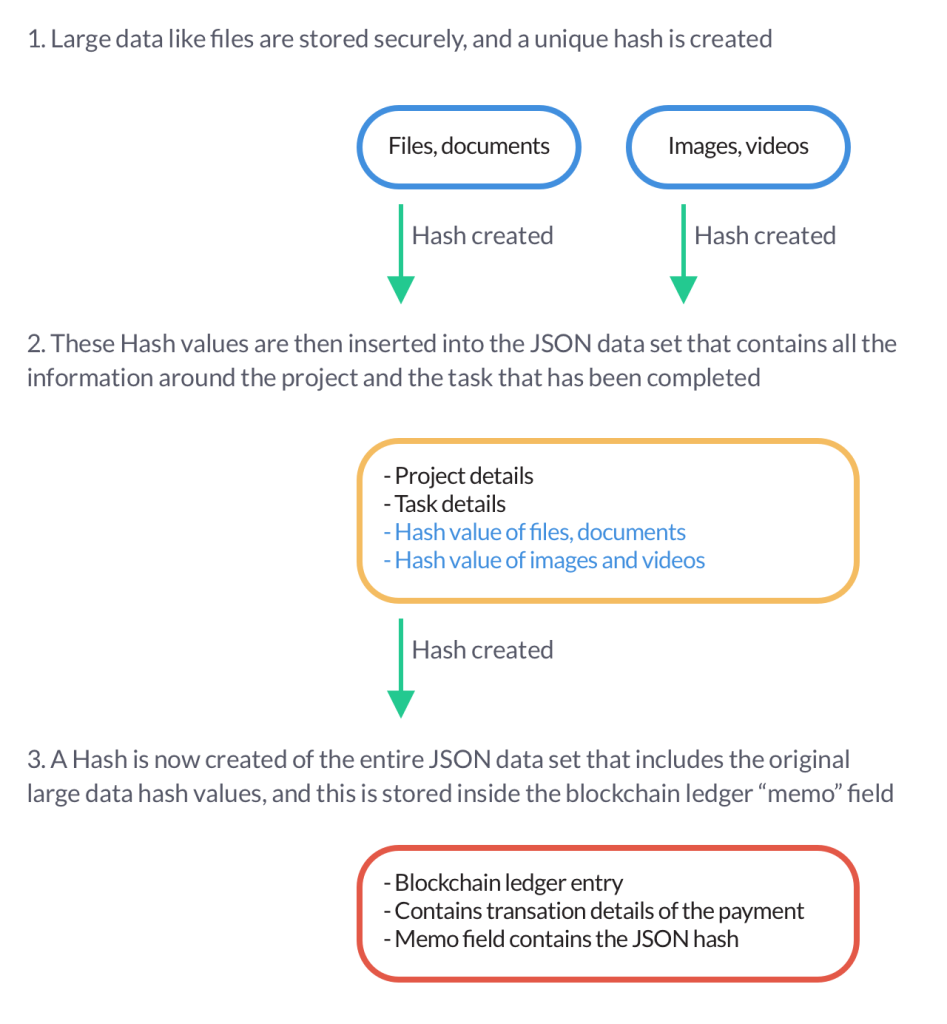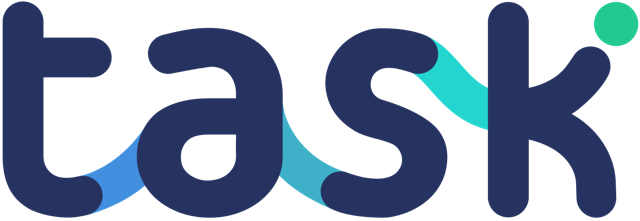Woven into the Task architecture is a combination of blockchain ledger storage and hash encryption that ensures the data stored in Task is immutable and cannot be changed. That means the reporting you see with Task is always based on the real data that was collected.
A “one way hash function” is an algorithm that turns messages, text, files and other data into a fixed string of digits, that can be done in once direction only using the same data everytime to create the same result.
This created a digital signature of the original file, which can be stored. If you wish to check that the file or data you are looking at has not been changed, you simply rerun the hash function and it will produce the same “digital signature”.
For Task customers using token payments for rewarding the team, and/or tracked funding, Task uses a combination of blockchain ledger storage combined with these hash values to store your data. This is the workflow:

As a consequence of this workflow, the Hash values are immutably locked inside the Blockchain ledger – and Task is able to perform reverse data checks. If any data is alerted, the Hash value in the ledger will no longer match – and we know the data has been compromised.
